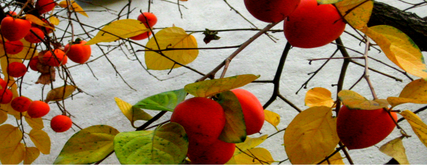General notes: For those of us who like to bundle up during this
time of year, our balmy 'flip-flops and T-shirt' Christmas was a bit
of a disappointment. Weather forecasters think this is because of
the return of La Niña conditions in the Pacific. When will winter
truly arrive, and how should gardeners handle the effects of another
mild winter?
The main problem we face during mild winters is the rapid fluctuat-
ion of temperature. In the warmth, the plants will mistakenly think
that it is time to start growing, and then they're hit with a freeze in
February, and it can prove fatal.
During these mild winters, we must do everything we can to discour-
age growth. Avoid feeding plants, and avoid cutting plants back too
soon. For roses, wait until mid-February. If you have the urge to cut
back perennials such as lantana or firebush to tidy up the yard, be
sure to cut them back above the green wood.
Otherwise, with your clippers, you are sending the plant a message:
it's time to start growing. What we can do is heap generous amounts
of mulch around our plants to protect the roots for when the cold
weather arrives. Some more things you can do in January:
1. Prepare spring vegetable garden. I would recommend the sol-
arization method to get rid of weeds. Till your garden with a mech-
anical tiller or a garden spade and water the area thoroughly. Cover
with a clear plastic film and secure the perimeter with rocks or soil.
The sun will raise the temperature in the garden soil to levels that
will kill weeds and seeds. Allow the film to stay on for a month to
six weeks. When removed, your garden will be weed free.
_____________________________________________________
2. Plant a Tree. There is still time. Maybe you purchased a living
tree for the holidays. Find that perfect spot, plant it and water it in.
_____________________________________________________
3. Catalog browsing. Find a comfortable armchair, and get to work!
January is a good time to look through garden and seed catalogs to
decide on varieties you want to grow this year. Starting a garden
journal is a simple way to keep track of what you plant and what has
been successful.
_____________________________________________________
4. Turn off sprinklers. Automatic lawn sprinklers should be set at
a minimum or simply turn them off. (Turf grass is dormant.)
_____________________________________________________
5. Plant Asparagus. Now is the time to prepare beds and plant.
Three year asparagus crowns will arrive in local nurseries early this
month. Beds should be dug deeply and filled with rich organic com-
post. Three year crowns will put you closer to harvest than seed grown.
_____________________________________________________
6. Onions are still possible. You still have the opportunity to prod-
uce large onions this year. Also you can plant turnips, collards, and
radishes.
_____________________________________________________
7. Prune your shrubs. Cut them back, but avoid any that will bloom
in the spring. (Prune them after they bloom.)
_____________________________________________________
8. Plant a fruit tree. Many fruit tree varieties will arrive in local
nurseries this month, and in February and March. Try apples, peaches,
plums, persimmons, and pears. Happy gardening everyone!





